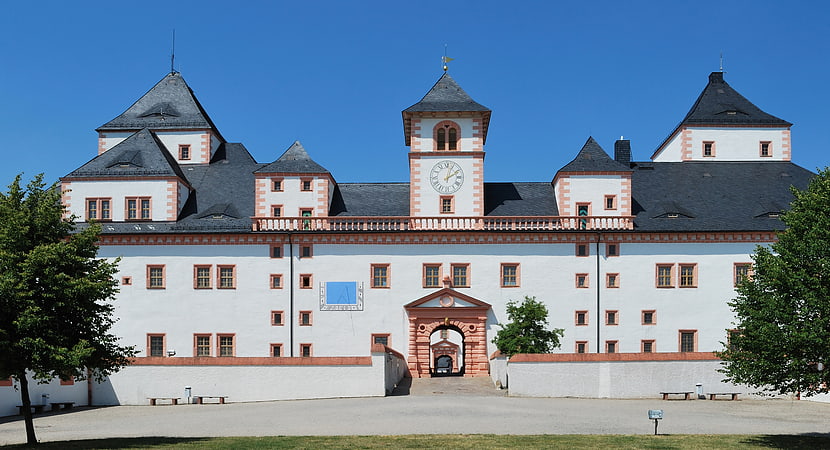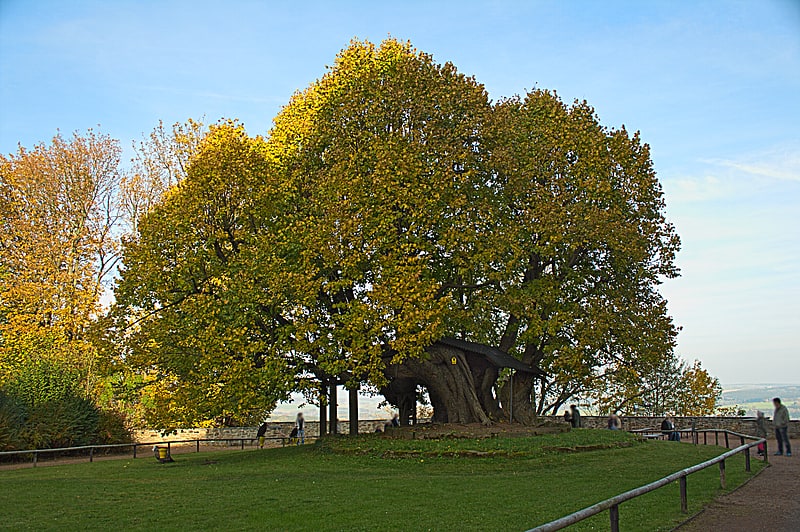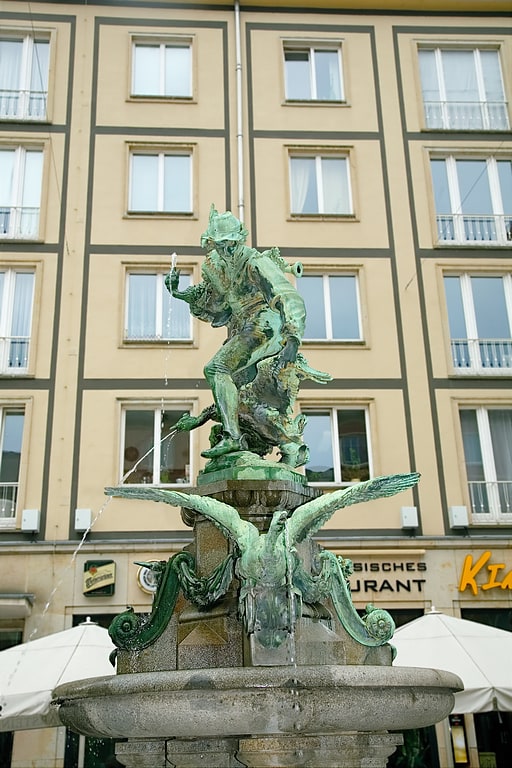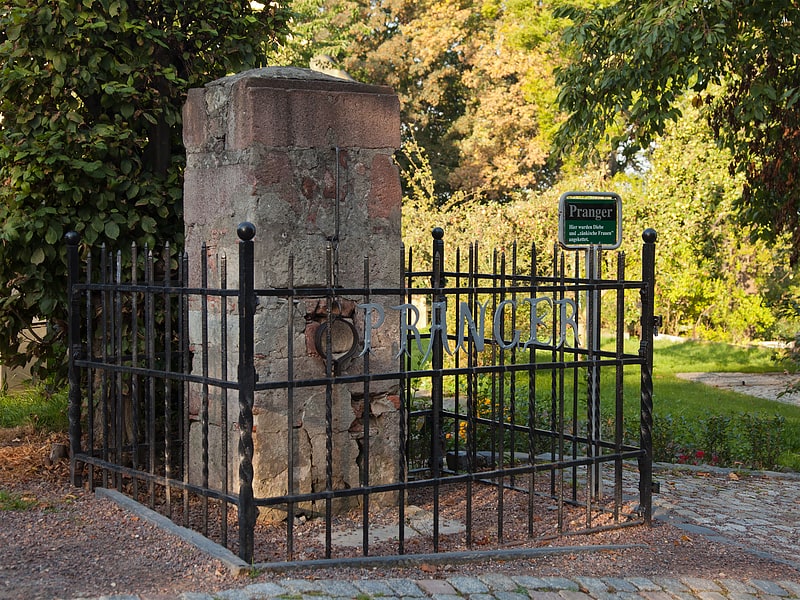Discover 4 hidden attractions, cool sights, and unusual things to do in Augustusburg (Germany). Don't miss out on these must-see attractions: Schloss Augustusburg, Schlosslinde, and Gänsediebbrunnen. Also, be sure to include Pranger in your itinerary.
Below, you can find the list of the most amazing places you should visit in Augustusburg (Saxony).
Table of Contents
Schloss Augustusburg

Also known as: Jagdschloss Augustusburg
Castle in Augustusburg, Germany. The hunting lodge of Augustusburg was built from 1568 to 1572 above the town of the same name on a hill called the Schellenberg on the northern edge of the Ore Mountains of Germany. The castle, which is visible from afar, is a local landmark. It lies about 12 kilometres east of the city of Chemnitz and about 21 kilometres southwest of Freiberg in the Free State of Saxony.
In building a new castle, Prince Elector Augustus wanted not just to create a prestigious palace for his hunting trips, but also to underline his leading position in Central Germany. The immediate occasion for its construction was his victory in the Grumbach Brawl (Grumbachsche Händel). By enforcing the imperial ban on his Ernestine rivals – John Frederick the Middle and outlawed knight, Wilhelm von Grumbach, who sought refuge with John Frederick – the Albertine elector, Augustus, was able secure his supremacy over the Ernestines. He was also given the Ämter of Weida, Ziegenrück and Arnshaugk, which belonged to what later became the district of Neustädter Kreis. Thanks to the thriving economy of the Electorate of Saxony under Moritz and Augustus, the necessary finance for the construction of the castle was available.[1]
Address: Schloss 1, 09573 Augustusburg
Schlosslinde

The Schlosslinde stands in the castle grounds of the Augustusburg hunting lodge above the town of the same name on the northern edge of the Ore Mountains in Saxony. The Dutch lime tree was planted in 1421 and is thus one of the oldest trees whose planting is concretely documented. It is designated as a natural monument and has a trunk circumference of about eight meters. The "German Tree Archive" counts it among the "Nationally Important Trees", the most important selection criterion for this being the circumference of the trunk at a height of one meter. Its current shape has been shaped for centuries by weather conditions and the actions of man. Thus, as early as 1549, the lime tree was supported by a wooden framework, and the branches were pulled into shape like a dancing lime tree. In the past, there were 120 dining tables under the wide crown. The history of the lime tree is as well documented as that of hardly any other tree in Germany. Today, the lime tree regularly hosts demonstrations by the eagle and hunting falconry.
Gänsediebbrunnen

The goose fountain is a fountain in the white alley in the inner old town of Dresden.
It consists of a bronze figure on a stone base in a pool of water. The bronze figure was created in 1878 by Robert Diez as a statue. The architects Paul Weidner and Giese participated in the design of the fountain parts consisting of Lausitzer granite. The bronze cast is a work by the Dresden foundry C. Albert Bierling. A young man who steals two geese is shown. This plastic shows Thomas Platter (1499–1582), later book printer and rector of the Latin school in Basel, the theft of two geese. Platter visited the cross school in Dresden in 1512 as a traveling student. He stole two geese for the farewell dinner with the schoolmaster. There are two more geese and two floral decorated volts on the base above a batch of catchment.
Robert Diez took part in a competition for a "fountain on Ferdinandplatz" in 1876 and won the tender for which 27 designs had been received. At the international art exhibition in Munich in 1879, the plastic of the goose was received the large gold medal. On November 20, 1879, a competition was advertised by the city of Dresden on November 20, 1879, the goal of which was to create two inner -city fountain. At that time, two simple fountain pools existed. However, the jury did not make a decision among 5 pre -elected designs in 1880. Three designs received the first prize with 1000 marks each. Robert Diez had submitted the draft developed together with Weidner and Giese under the title "Clear water and cloudy water". After revisions, he finally awarded the contract in 1883.
On April 20, 1880, his 36th birthday, the fountain was inaugurated on Ferdinandplatz in front of the house with the wine shop D. Geulke & Co. The fountain was financed by the Güntzstiftung by Justus Friedrich Güntz, according to other sources by Hermann -Foundation, endowment. The fountain survived the air raids on Dresden in February 1945 largely undamaged. For its protection, the fountain plant was dismantled in the inner city area cleared by ruins in 1949. She temporarily found storage in one of the courtyards of the town hall. In 1961, its current location in the White Gasse occurred in 1961, but without the artistic grille.
On the occasion of the National Stamp Exhibition of the GDR in Dresden, Deutsche Post in 1979 published three stamps with Dresden motifs, of which a brand shows the Gänsediebbrunnens.
The fountain was renovated in the afternoon years 1991 and 1992.
A copy of the fountain stands in Diez ’hometown Pößneck.
In Augustusburg (Erzgebirge) there is the trial cast of the fountain figure.
Pranger
